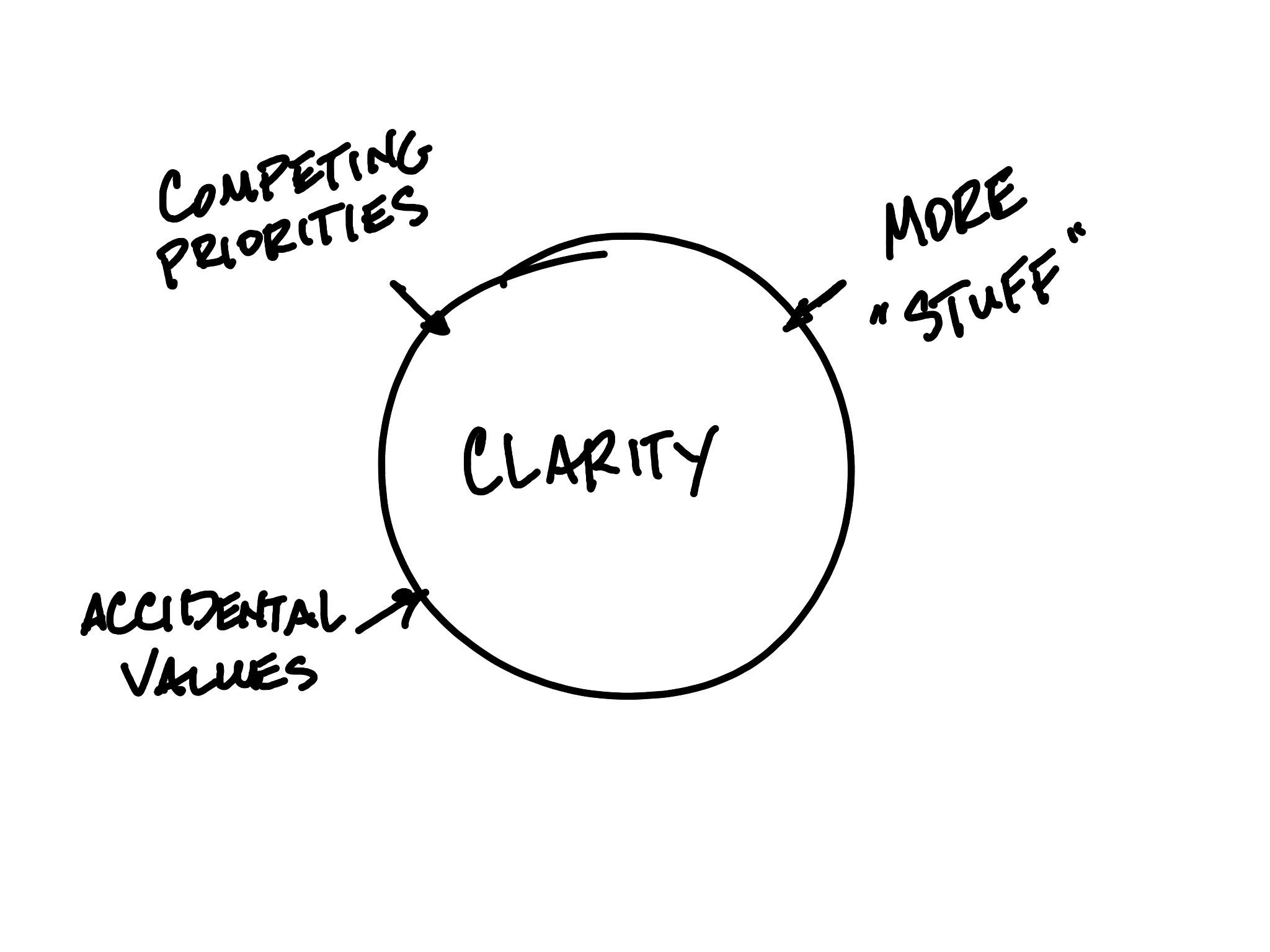Often teams are creating Clarity and beginning the process. We have provided many tools for them to do this. If you are at this stage, a good article to start with would be “Getting Clear about Clarity”.
Other times, teams are executing on the Clarity and stumbling a bit. They have done a good job creating Clarity, but are bumping into some common challenges when trying to communicate. Here are a few reasons why Clarity may not be working after it’s been created.
When It Changes
A classic error can occur after creating Clarity: it changes constantly. Now, to be clear, it’s ok to refine and adjust pieces of Clarity over time. That’s a leadership team’s job. And we are always creating Clarity as we make decisions and solve problems. But, those decisions should sync with our core Clarity (i.e., answers to the 6 Critical Questions). Often leaders and teams will ‘tinker’ with Clarity and it can cause confusion.
A team I worked with was led by an amazing entrepreneur. He was inspiring and everyone respected him. In Monday’s staff meeting, he could create Clarity and everyone was transcribing his every word. They got it and were off to the races. So, what’s the problem? By Tuesday morning he was already brainstorming 3 new ideas in 1-1 meetings all over the office. His people were not able to maintain focus or momentum because they always expected Clarity to change.
The point: Organizational A.D.D. from leaders and the leadership team discourages adoption and short circuits execution.
When It’s Crowded
Clarity is great. But, you know what they say about too much of a good thing. Healthy teams over-communicate a few simple things with lots of stories, examples, and reinforcing messages. Other organizations unload a dump truck of data to make sure everyone has all the available information.
I worked with a client who sent 3 page emails to the staff Monday morning. The intention was honorable. And the first week, people did seem grateful. But, as time went on, no one could find the needle of Clarity in the haystack of information. Instead, the communications became white noise and everyone was left to decide which information was important.
The point: Too much noise dilutes the core. Like Patrick Lencioni says, “if everything is important, then nothing is.” Take a look at any aspect of your Clarity and ask, “have we boiled this down to its essence?”
“If everything is important, then nothing is.”
Patrick Lencioni
When It Competes
We can be crystal clear as we roll out our new Clarity. Zero confusion. But, afterwards, the employees will start watching. Is this the new norm? Or will our direction be quickly derailed by old habits, unwritten rules, and sacred cows? Healthy teams take a stand and make sure everyone knows that our Clarity is non-negotiable. Other organizations allow the old guard to operate ‘as is’ and send a powerful message to all; our purpose, values, priorities, etc. are optional vs. ‘non-negotiable’.
I worked with a client who executed a beautiful rollout of their Clarity. One of their values was “Team First.” This sounded great. However, their top salesperson was a terror to work with and didn’t want anything to do with teams. He skipped meetings without excuse, held sales data close to the vest, and got animated if anyone questioned his methods. He was hitting and exceeding his numbers, but the rest of the organization was brushing up their resumes.
The point: Hidden rules and accidental values can override clarity. We have to be careful to reinforce that Clarity and make sure everyone knows it’s non-negotiable.
Creating and Over-communicating Clarity is hard work. Protect that investment by sticking to it, staying in message, and making sure everyone knows it truly reflects your values, strategy, and priority.




0 Comments